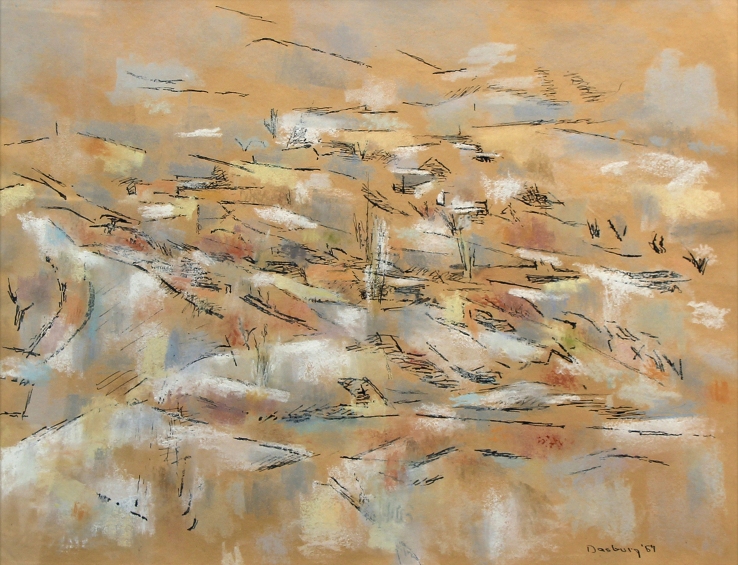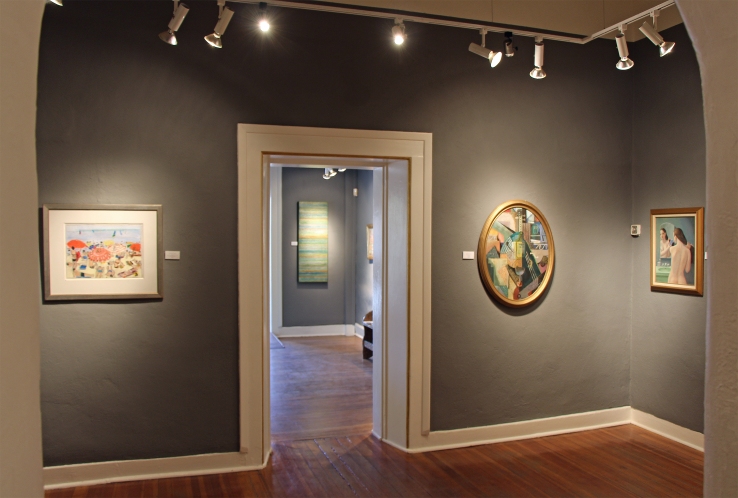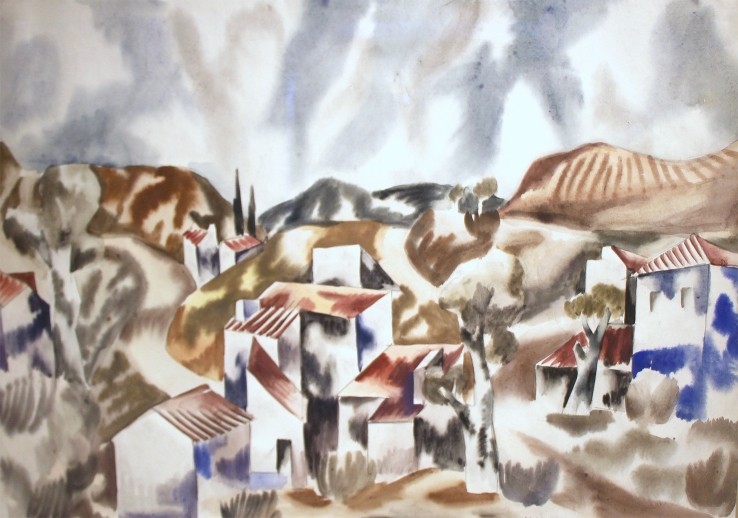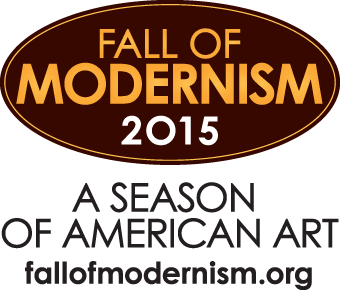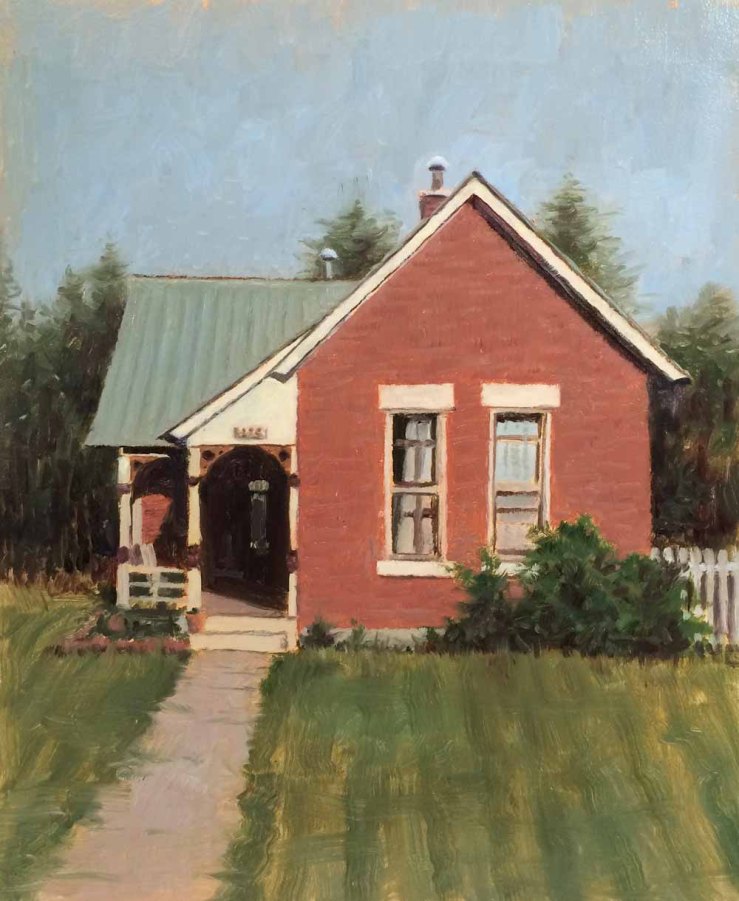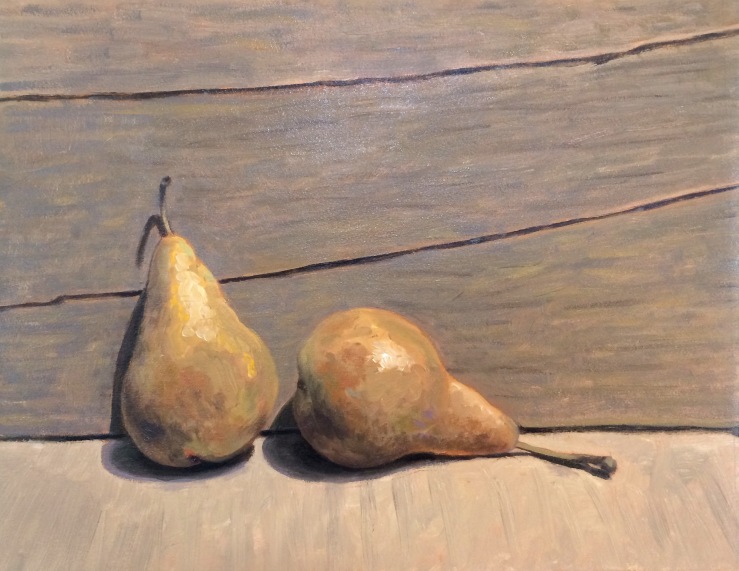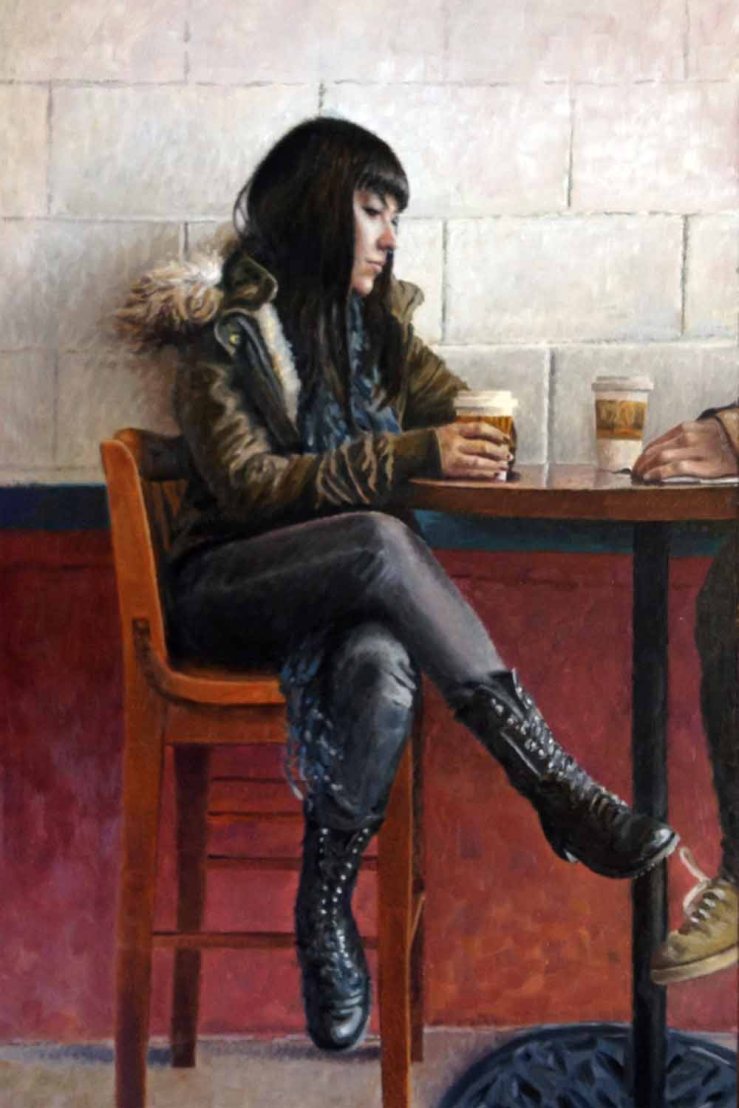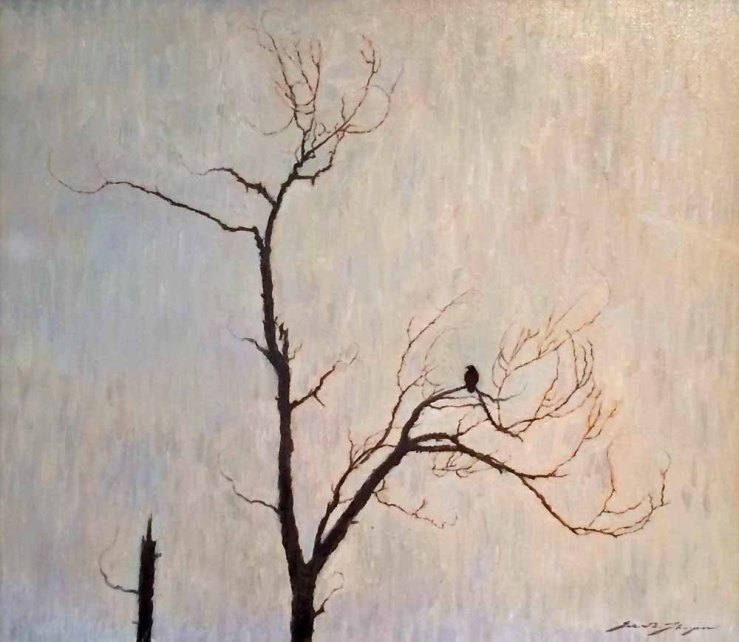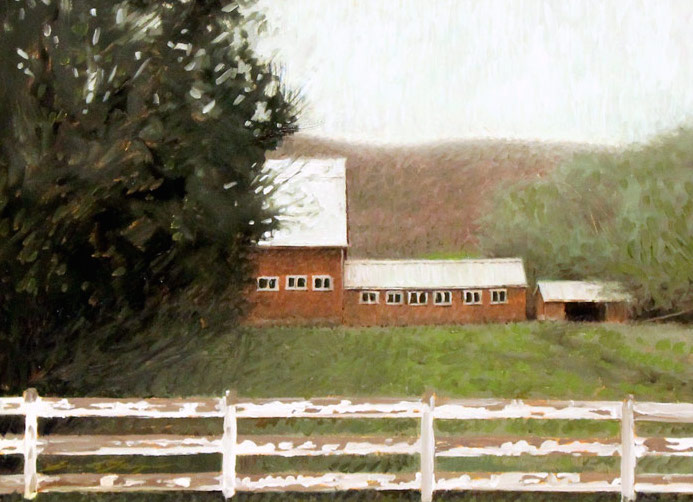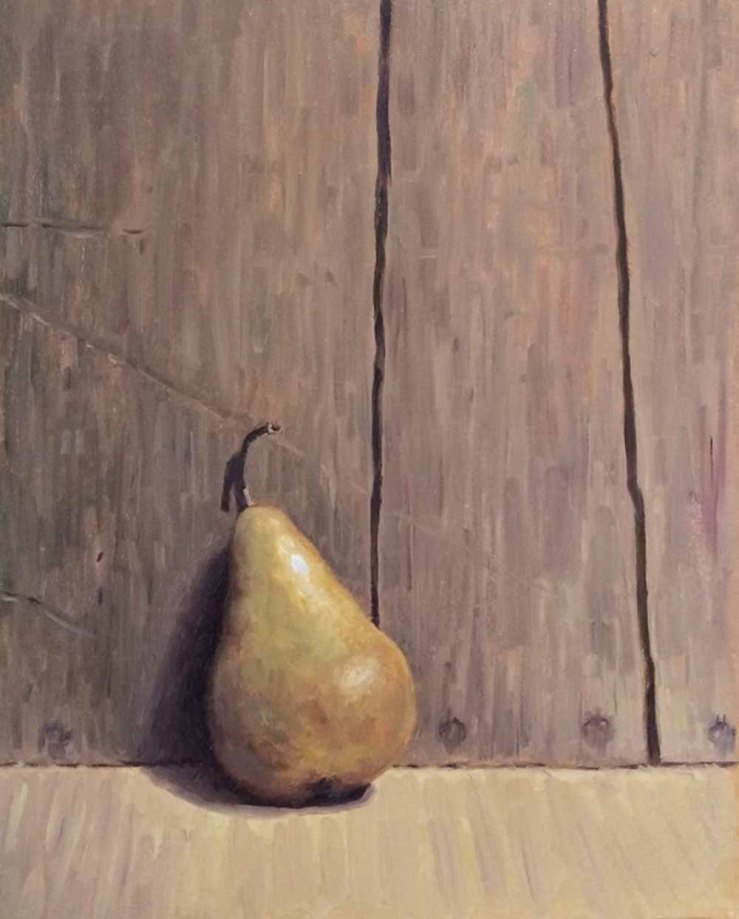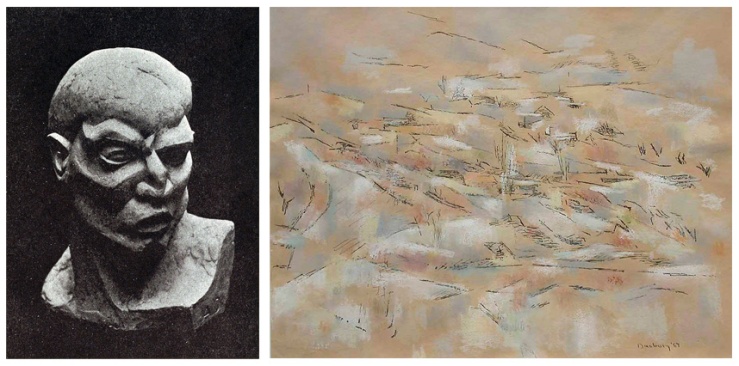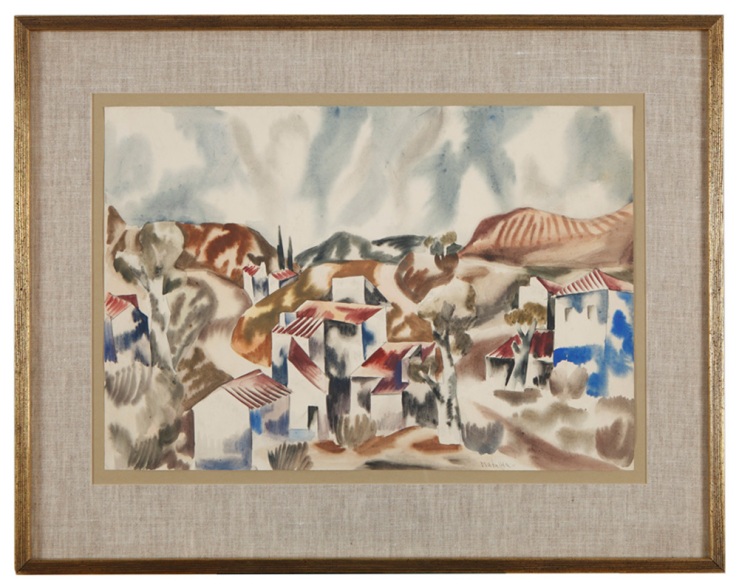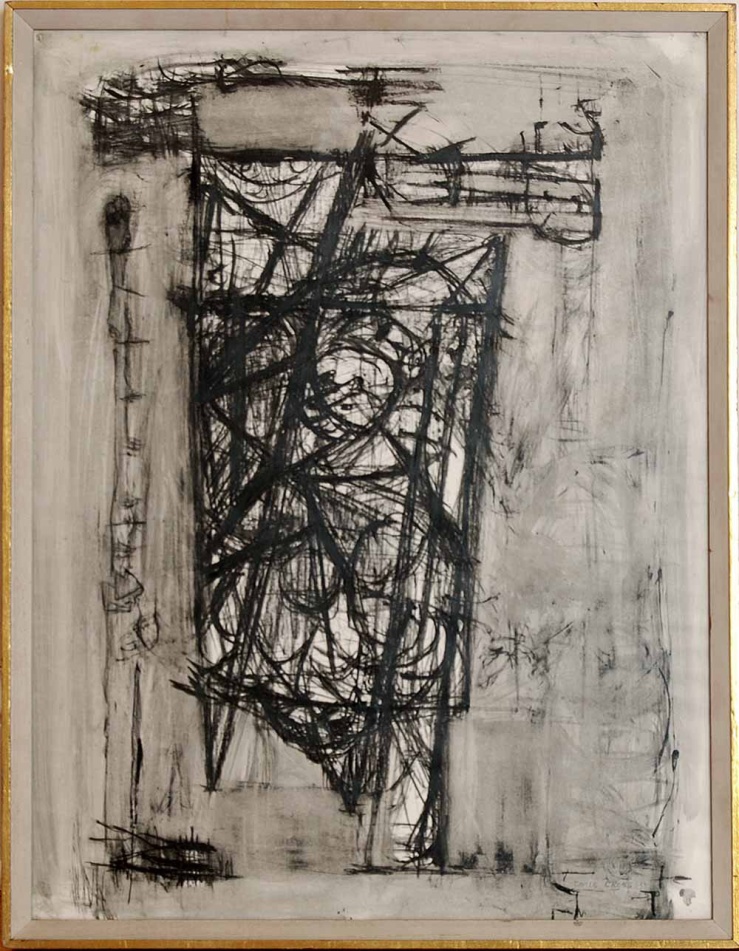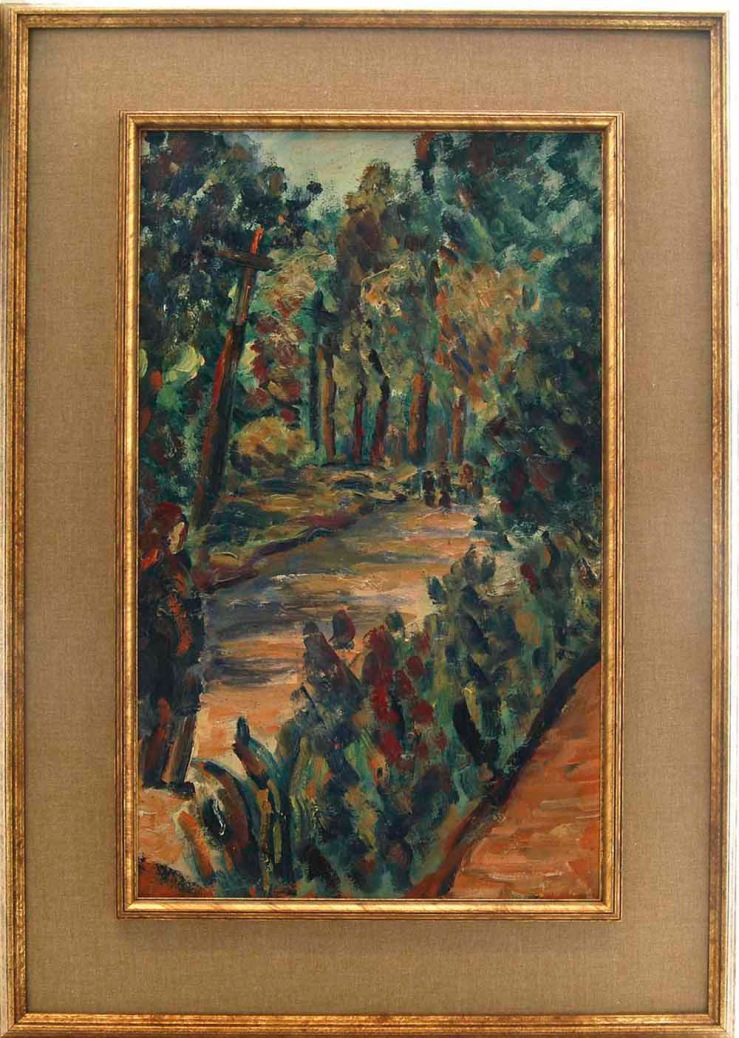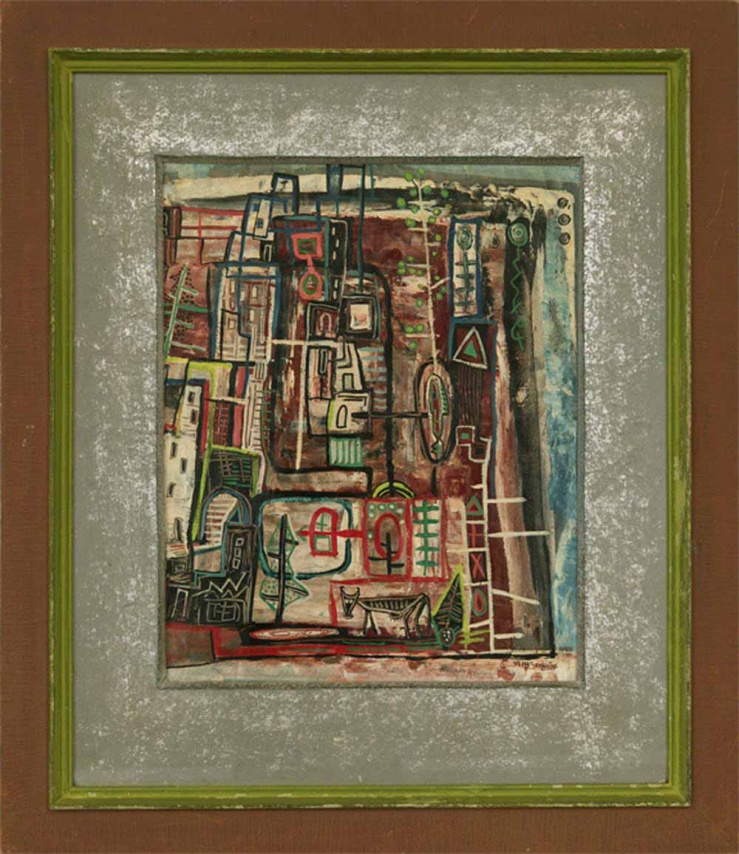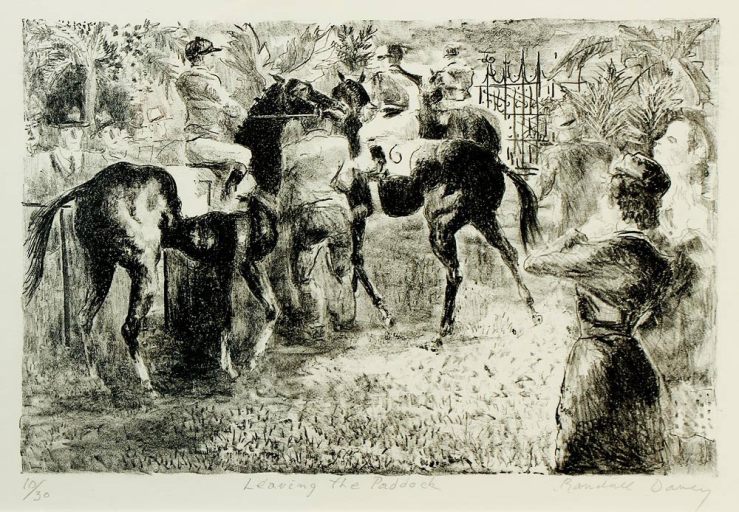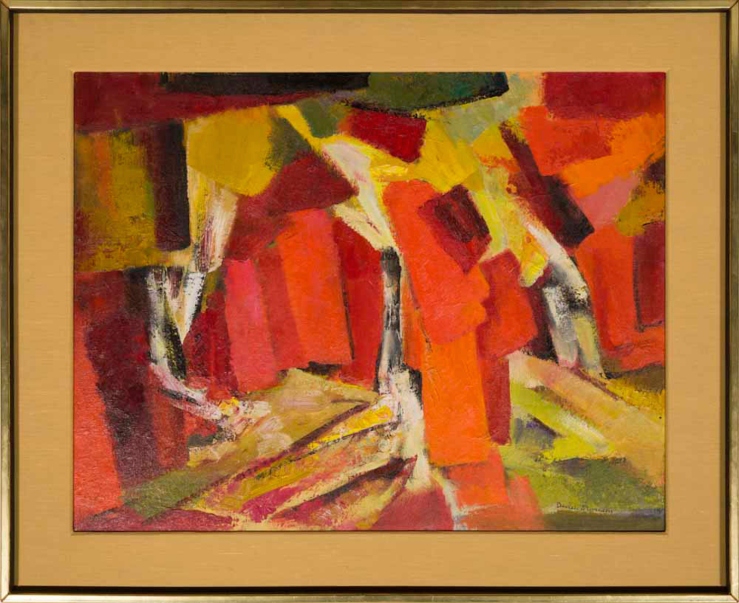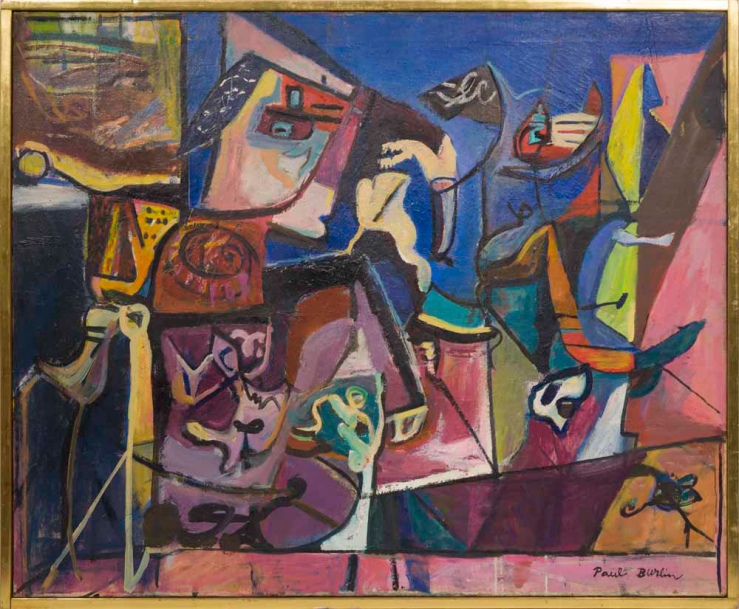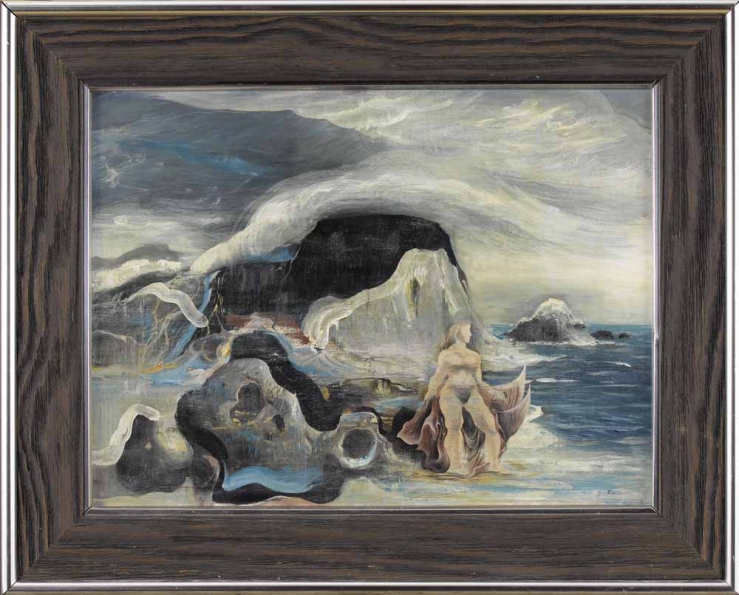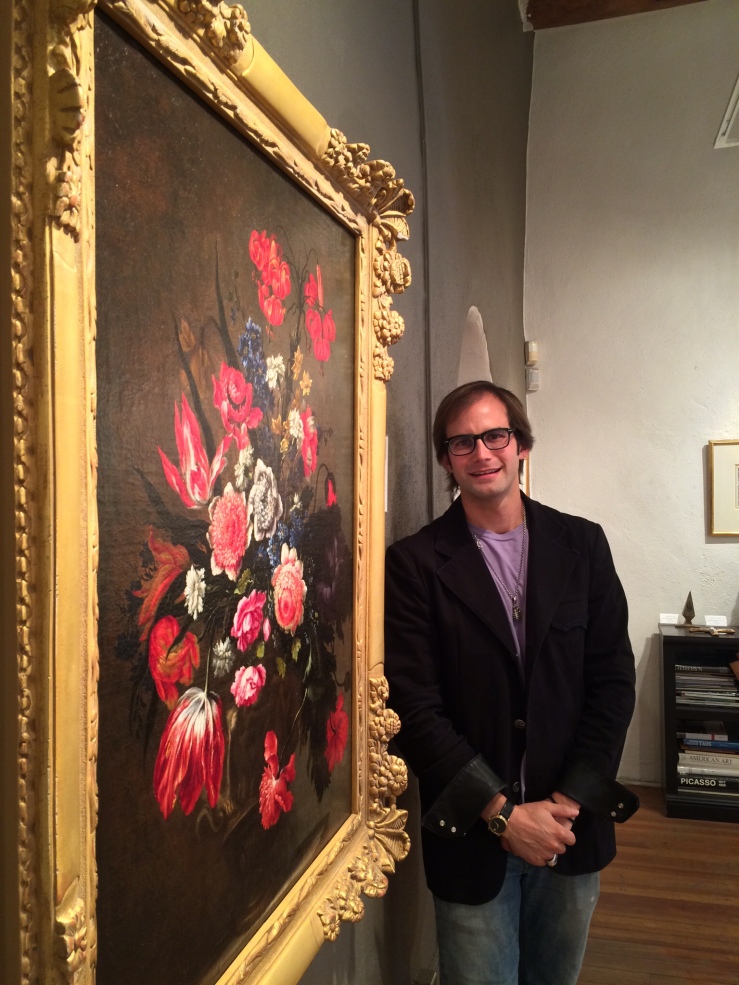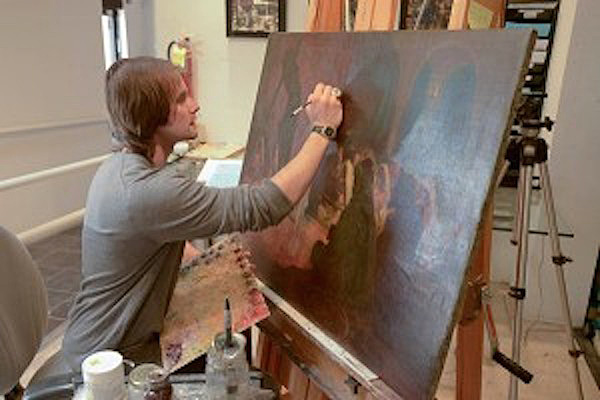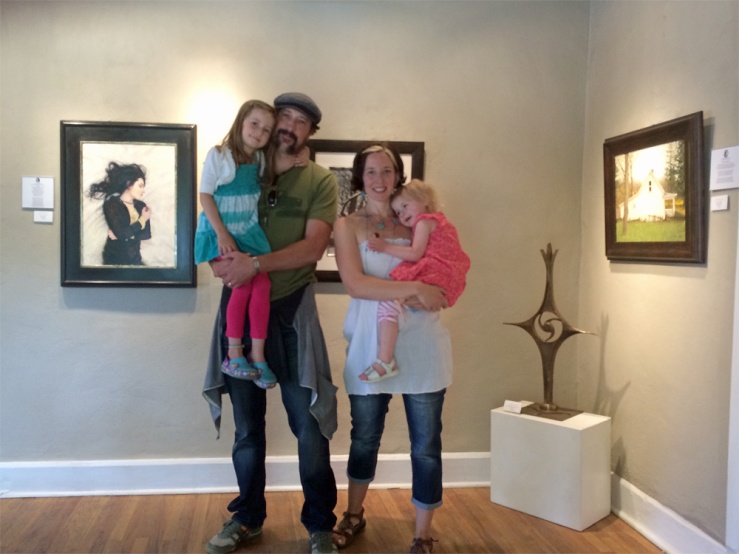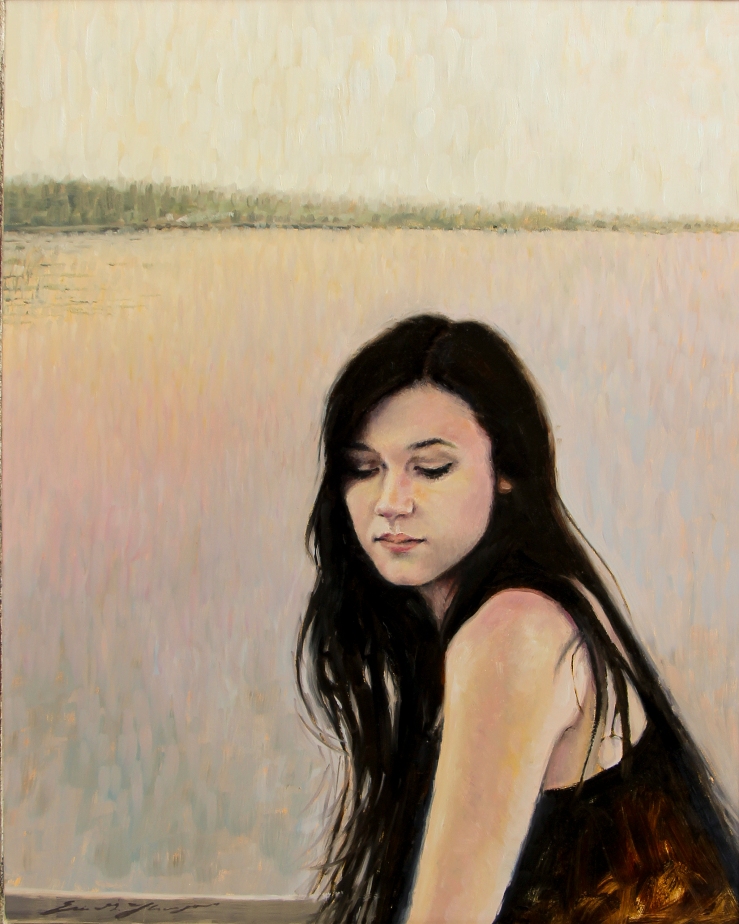 Eric Thompson, Spring City House, Oil on Canvas
Eric Thompson, Spring City House, Oil on Canvas
“He halted in the wind, and — what was that/ Far in the maples, pale, but not a ghost?”
So begins Robert Frost’s poem A Boundless Moment, the inspiration for the title of Eric G. Thompson’s upcoming solo exhibition. The show will feature the Utah Valley artist’s contemporary realist paintings alongside the writings of Frost, Dickinson and other well-known American poets.
Thompson isn’t necessarily inspired by these figures, but as you’ll see below, there’s a uniquely American sense of solitude and yearning that unites his contemporary images with their legendary words.
Read Frost’s couplet again and savor the mystery of it, which subsequently unravels over three sensuous stanzas. Thompson’s paintings also evoke questions, but his enigmas come in the form of foggy memories. An aching sense of familiarity pervades his work, encouraging us to pause, ponder and lose ourselves for a moment… however long that may be.
Scroll down for a special preview of Thompson’s new artwork, interspersed with lovely poetry selected by Lawrence. Make sure to attend the opening of ‘The Boundless Moment: New Paintings by Eric G. Thompson‘ on Friday, August 15 from 5-7 pm.
 Eric G. Thompson, Raven’s Hair, Oil on Panel
Eric G. Thompson, Raven’s Hair, Oil on Panel
A Boundless Moment
Robert Frost
He halted in the wind, and — what was that
Far in the maples, pale, but not a ghost?
He stood there bringing March against his thought,
And yet too ready to believe the most.
“Oh, that’s the Paradise-in-bloom,” I said;
And truly it was fair enough for flowers
had we but in us to assume in march
Such white luxuriance of May for ours.
We stood a moment so in a strange world,
Myself as one his own pretense deceives;
And then I said the truth (and we moved on).
A young beech clinging to its last year’s leaves.
 Eric G. Thompson, Strong Bones, Oil on Panel
Eric G. Thompson, Strong Bones, Oil on Panel
 Eric G. Thompson, Back Door, Oil on Panel
Eric G. Thompson, Back Door, Oil on Panel
I dwell in Possibility — (466)
Emily Dickinson
I dwell in Possibility —
A fairer House than Prose —
More numerous of Windows —
Superior — for Doors —
Of Chambers as the Cedars —
Impregnable of eye —And for an everlasting Roof
The Gambrels of the Sky —
Of Visitors — the fairest —
For Occupation — This —The spreading wide my narrow Hands —
To gather Paradise —
 Eric G. Thompson, Winter Blanket, Watercolor
Eric G. Thompson, Winter Blanket, Watercolor
The Old Flame
Robert Lowell
My old flame, my wife!
Remember our lists of birds? One morning last summer, I drove
by our house in Maine. It was still
on top of its hill—
Now a red ear of Indian maize
was splashed on the door.
Old Glory with thirteen stripes
hung on a pole. The clapboard
was old-red schoolhouse red.
Inside, a new landlord,
a new wife, a new broom!
Atlantic seaboard antique shop
pewter and plunder
shone in each room.
A new frontier!
No running next door
now to phone the sheriff
for his taxi to Bath
and the State Liquor Store!
No one saw your ghostly
imaginary lover
stare through the window
and tighten
the scarf at his throat.
Health to the new people,
health to their flag, to their old
restored house on the hill!
Everything had been swept bare,
furnished, garnished and aired.
Everything’s changed for the best—
how quivering and fierce we were,
there snowbound together,
simmering like wasps
in our tent of books!
Poor ghost, old love, speak
with your old voice
of flaming insight
that kept us awake all night.
In one bed and apart,
we heard the plow
groaning up hill—
a red light, then a blue,
as it tossed off the snow
to the side of the road.

Matthews Gallery, Spring Blossoms, Oil on Panel
I Am in Need of Music
Elizabeth Bishop
I am in need of music that would flow
Over my fretful, feeling fingertips,
Over my bitter-tainted, trembling lips,
With melody, deep, clear, and liquid-slow.
Oh, for the healing swaying, old and low,
Of some song sung to rest the tired dead,
A song to fall like water on my head,
And over quivering limbs, dream flushed to glow!
There is a magic made by melody:
A spell of rest, and quiet breath, and cool
Heart, that sinks through fading colors deep
To the subaqueous stillness of the sea,
And floats forever in a moon-green pool
Held in the arms of rhythm and of sleep.
Learn more about Thompson’s show on our exhibition page, and connect with us on Facebook, Twitter and Instagram for more gallery news.
